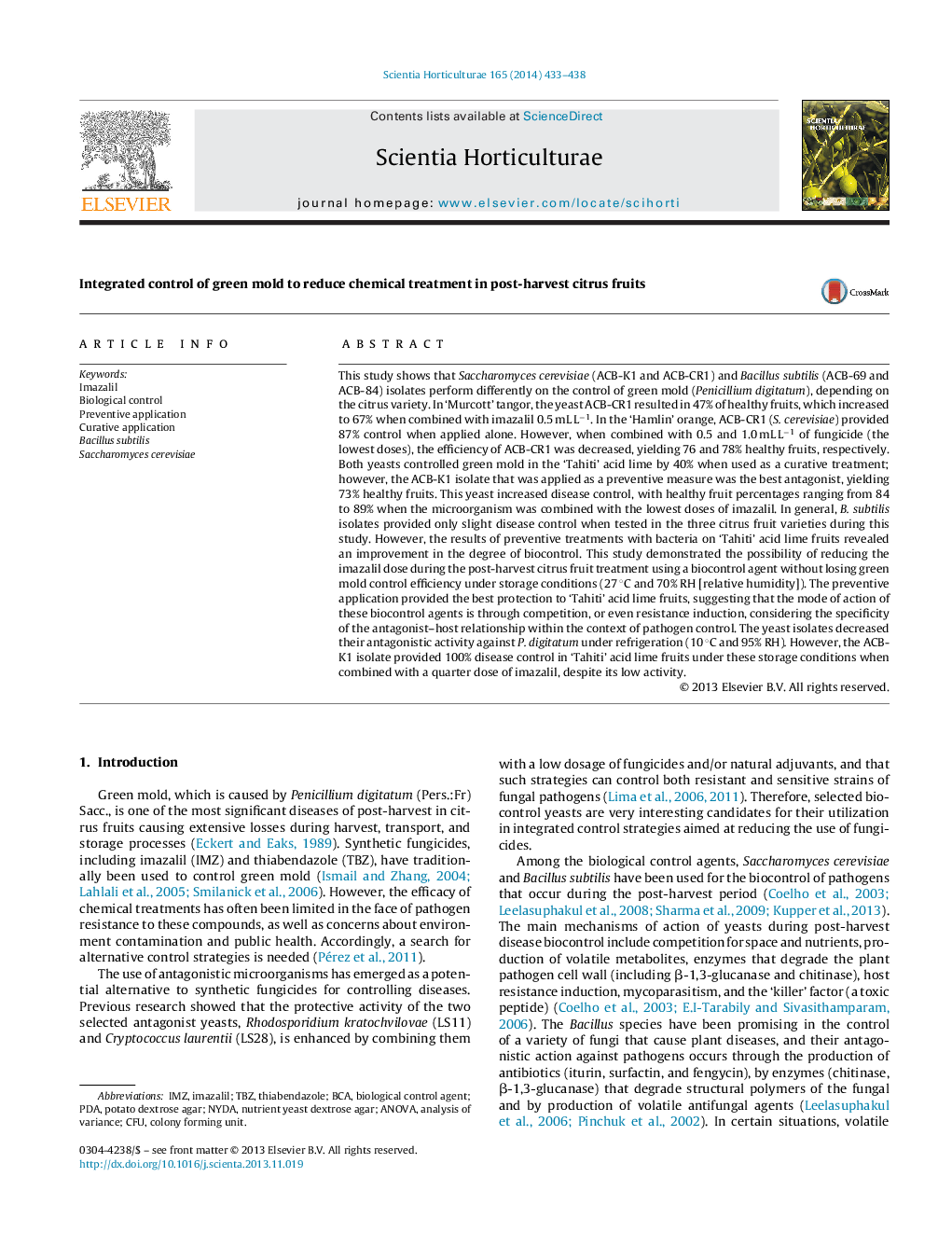| کد مقاله | کد نشریه | سال انتشار | مقاله انگلیسی | نسخه تمام متن |
|---|---|---|---|---|
| 6407494 | 1628833 | 2014 | 6 صفحه PDF | دانلود رایگان |
- Green mold is one of the most significant diseases of post-harvest citrus fruits.
- Saccharomyces cerevisiae isolates showed the best control of Penicillium digitatum.
- The antagonistic effect of S. cerevisiae depended on the citrus variety.
- The preventive treatment of S. cerevisiae improves the biocontrol of green mold.
- It is possible to reduce the imazalil dose post-harvest using biocontrol agents.
This study shows that Saccharomyces cerevisiae (ACB-K1 and ACB-CR1) and Bacillus subtilis (ACB-69 and ACB-84) isolates perform differently on the control of green mold (Penicillium digitatum), depending on the citrus variety. In 'Murcott' tangor, the yeast ACB-CR1 resulted in 47% of healthy fruits, which increased to 67% when combined with imazalil 0.5 mL Lâ1. In the 'Hamlin' orange, ACB-CR1 (S. cerevisiae) provided 87% control when applied alone. However, when combined with 0.5 and 1.0 mL Lâ1 of fungicide (the lowest doses), the efficiency of ACB-CR1 was decreased, yielding 76 and 78% healthy fruits, respectively. Both yeasts controlled green mold in the 'Tahiti' acid lime by 40% when used as a curative treatment; however, the ACB-K1 isolate that was applied as a preventive measure was the best antagonist, yielding 73% healthy fruits. This yeast increased disease control, with healthy fruit percentages ranging from 84 to 89% when the microorganism was combined with the lowest doses of imazalil. In general, B. subtilis isolates provided only slight disease control when tested in the three citrus fruit varieties during this study. However, the results of preventive treatments with bacteria on 'Tahiti' acid lime fruits revealed an improvement in the degree of biocontrol. This study demonstrated the possibility of reducing the imazalil dose during the post-harvest citrus fruit treatment using a biocontrol agent without losing green mold control efficiency under storage conditions (27 °C and 70% RH [relative humidity]). The preventive application provided the best protection to 'Tahiti' acid lime fruits, suggesting that the mode of action of these biocontrol agents is through competition, or even resistance induction, considering the specificity of the antagonist-host relationship within the context of pathogen control. The yeast isolates decreased their antagonistic activity against P. digitatum under refrigeration (10 °C and 95% RH). However, the ACB-K1 isolate provided 100% disease control in 'Tahiti' acid lime fruits under these storage conditions when combined with a quarter dose of imazalil, despite its low activity.
Journal: Scientia Horticulturae - Volume 165, 22 January 2014, Pages 433-438
